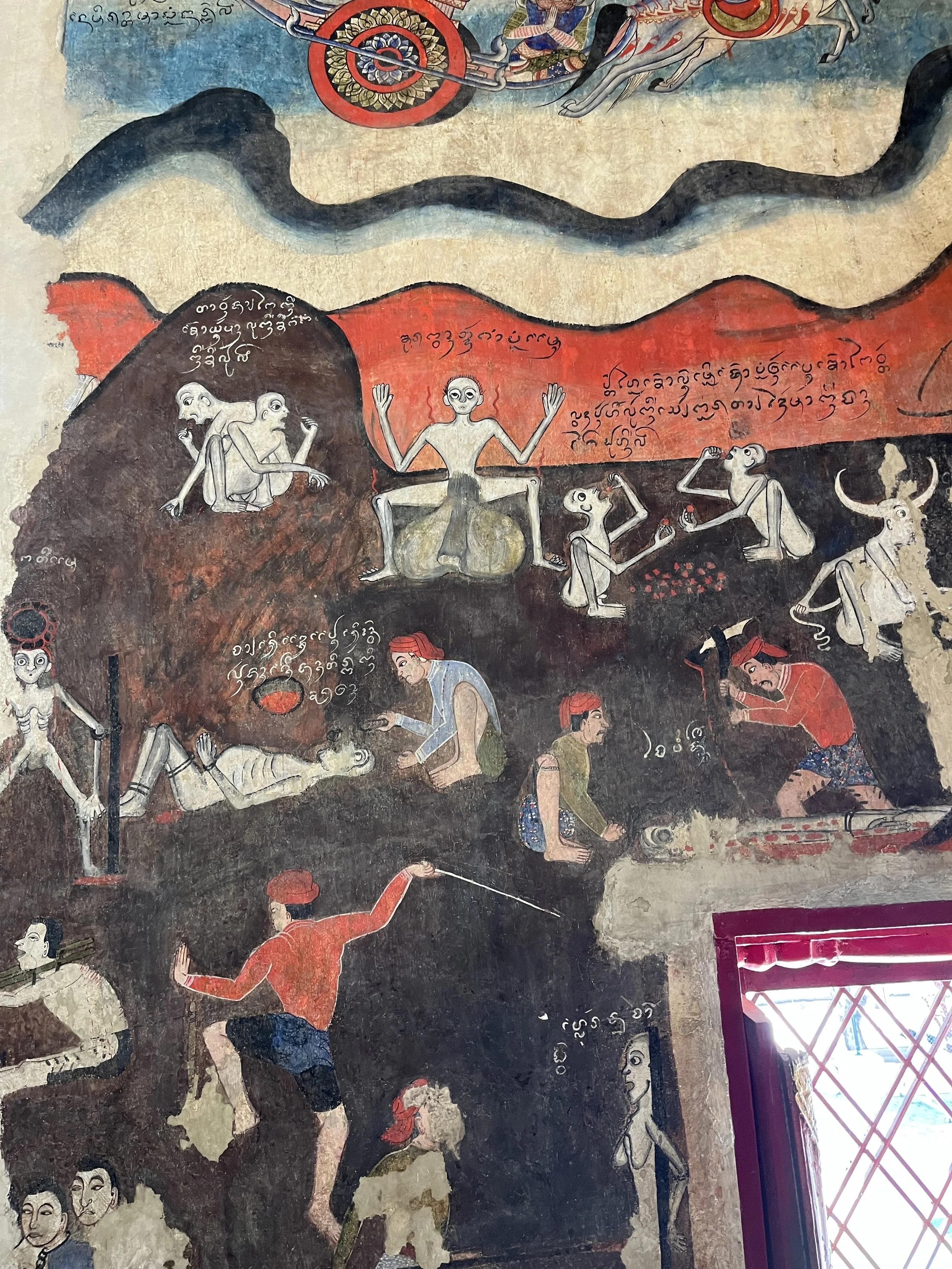Flirting, Smoking, and Tattoos in a Temple in Northern Thailand: The Mural Art of Wat Phumin – by Alisa Santikarn
Wat Phumin – a temple in Nan province in northern Thailand – is most famous for a depiction in its mural paintings known as the ‘Whisper of Love’. Often compared to Klimt’s The Kiss, the Whisper of Love is part of a wider set of temple murals thought to be painted by Nan Bua Pun (หนานบัวผัน), a local Lue (ᦟᦹᧉ) artist (also known as Tai Lue: ᦺᦑᦟᦹᧉ / ไทลื้อ) between 1867–1874. The text above the image, its official title, reads ‘ปู่ม่านย่าม่าน’ (Pu Man, Ya Man) in the Lanna script, translating to “Burmese Man and Woman.”
The Whisper of Love at Wat Phumin, Nan Province, Thailand (photograph by Alisa Santikarn).
The Whisper of Love is known as a ภาพกาก (phap gak) – a portrayal of side-characters that enliven (but are usually separate from) the broader narrative of the mural. The murals more broadly depict Buddhist allegories from the Nemiraj Jataka (เนมิราชชาดก) – Buddha’s incarnation as King Nemiraj – including scenes of heaven and hell. However, the phap gak scenes in the mural also add important insights into local culture at the time, such as dress and body adornment (including textile patterns, pierced and stretched earlobes filled with pieces of wrapped gold engraved as a form of ID, and tattoos in the traditional Lue style, with men inked from waist to knee), courtship and daily life rituals, and interactions between different Indigenous and ethnic groups in the region, as well as the arrival of Europeans.
Depictions of Hell at Wat Phumin (photograph by Alisa Santikarn).
One particularly curious feature is the abundance of figures smoking. These cigarettes are known as มูลีซีโย (mulisiyo) in the Lanna language of Northern Thailand. They were typically rolled in banana leaf and filled with tobacco and siyo – a flavoring added to soften the tobacco, made from crushed tamarind pod and sugarcane juice. There are various theories regarding the use of these cigarettes, including their function in keeping insects away, and even as a method of courtship – asking someone to light your cigarette or offering to light someone else’s could be a subtle sign of romantic interest.
Noble man – Price Khanthana – smoking in Wat Phumin with traditional tattoos visible on the man’s legs, extending below his knees (photograph by Alisa Santikarn).
This post offers a final reflection from Alisa Santikarn’s recent fieldwork in Thailand, supported by the ERC project Global Conservation: Histories and Theories. Her visit provided a vivid glimpse into the cultural richness embedded in temple mural art – a reminder of how heritage practices and everyday life intertwined in 19th-century Lanna society.
Alisa Santikarn




